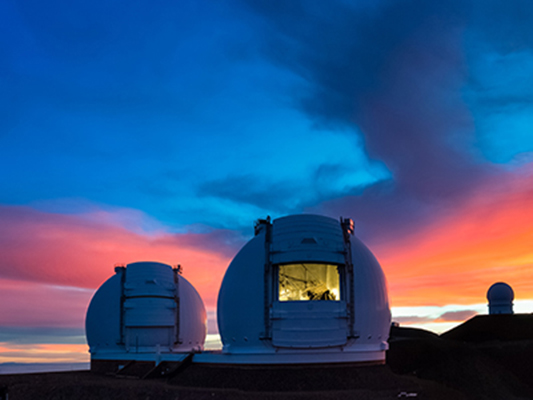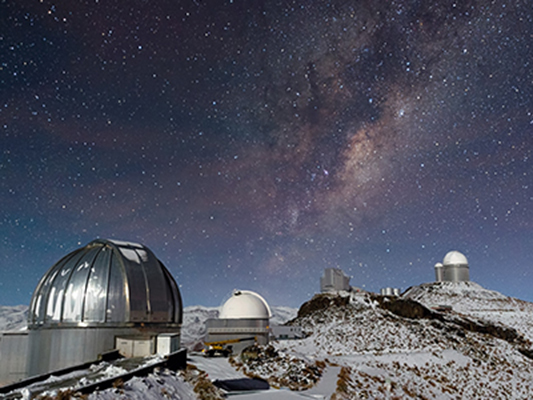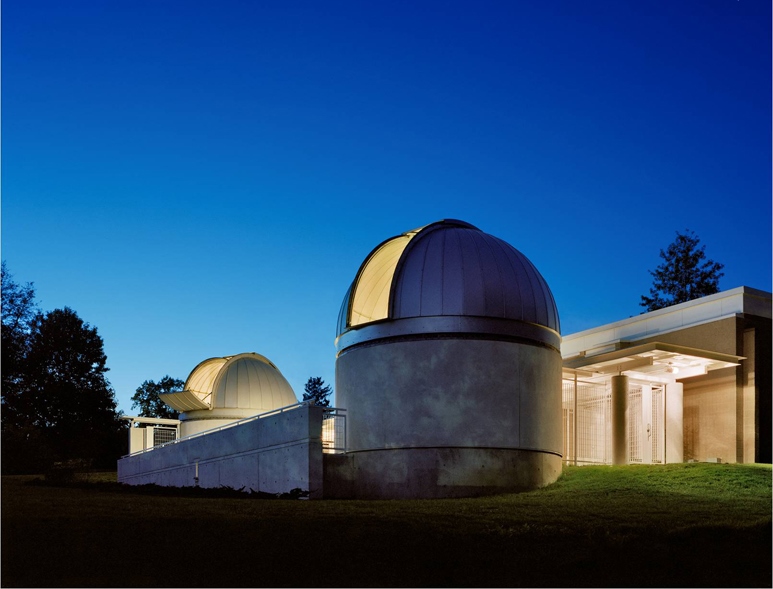Facilities
Yale astronomers have access to many world-class observational facilities, including 24 nights on the the Keck 10-m telescope and a ⅛ share of the Palomar 200-inch Hale Telescope; are full partners in the SDSS-IV project; and are frequently awarded time on various national and international facilities. Members of the Yale Astronomy community can apply for time on these facilities bi-annually; for more information on the process and the facilities, please see the Yale Time Allocation Committee pages.
 |
W.M. Keck ObservatoryYale currently has access to 24 nights per year on the Keck 10-meter telescopes on the summit of Mauna Kea in Hawai’i, as well as up to an additional 5 nights per year available specifically for collaborative projects with the California Institute of Technology. In addition, the Yale-Keck Remote Observing Facility is available on-site for Yale observers. |
 |
Palomar ObservatoryYale has a 1/8 share of the science time available on the 200-inch Hale Telescope at the Palomar Observatory in California. The Yale-Palomar Remote Observing Facility, located at Kline Tower on the Concourse in room CO4, is currently open to Yale observers only who have been awarded time on TripleSpec, WIRC, LFC, WaSP, and DBSP. |
 |
Sloan Digital Sky SurveyYale is an institutional member of the Sloan Digital Sky Survey (SDSS-V). As a member, all Yale researchers can participate in the survey and have access to all the data taken by the survey before it becomes public. |
 |
LaSilla-QUEST Variability SurveyThe LaSilla-QUEST Variability Survey studies variable astronomical objects, particularly Kuiper Belt Objects (KBOs), periodic variable stars and supernovae. The survey utilizes the 40” ESO Schmidt Telescope at the LaSilla Observatory in Chile with the large-area QUEST camera that was built jointly by Yale University and Indiana University. The data from the survey is accessible to all Yale researchers. |
 |
National and International FacilitiesYale astronomers are routinely awarded time on NASA and ESA space-based telescopes, including the Hubble Space Telescope, Kepler, the X-ray telescopes CHANDRA and RXTE, the infrared Spitzer and Herschel telescopes, and the gamma-ray telescope Fermi. There is significant scientific synergy between these space-based missions and Yale’s ground-based telescopes. In addition, Yale astronomers frequently utilize the facilities available at the national and international optical and radio observatories, including Kitt Peak, Gemini, ALMA and Arecibo. |
 |
Leitner Family Observatory and PlanetariumThe Leitner Family Observatory and Planetarium (LFOP) is an on-campus observatory and digital planetarium used for undergraduate research and education and for public events. It was made possible by the generous support of James Leitner (Yale ‘75) and Sandra Leitner. |
 |
ComputingThe Yale Astronomy Department provides a number of shared computer nodes that include most astronomical software. In addition, the department benefits from the University’s High Performance Computing facilities. Each research group can obtain a queue that provides access to compute nodes on several clusters and ample archival storage. |
